The settings on the Adjust Radiosity rollout let you adjust how an Architectural material material behaves in a radiosity solution.
Materials with a bright diffuse color or high shininess can be highly reflective. This can lead to overexposed or washed-out radiosity solutions. In general, the best way to adjust this is to reduce the HSV Value (V) of a material's diffuse color; or, for a material with a diffuse map, reduce the map's RGB level. In some situations, the controls on this rollout can improve the appearance of the radiosity solution. Examples of situations where the material's radiosity settings can help include color bleeding and large dark areas:
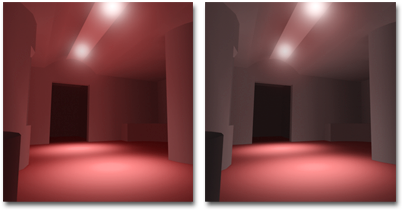
Left: Excessive bleeding of the floor color onto the walls and ceiling.
Right: Reducing the floor's Reflectance Scale causes less bleeding.
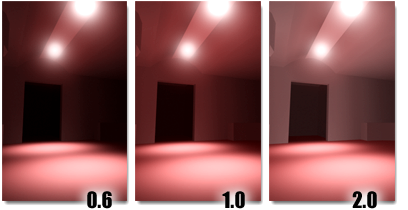
The room is lit only by spotlights pointed at the floor. Increasing reflectance of the floor brightens the entire room.
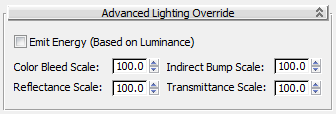
When on, the material contributes energy to the radiosity solution, based on the material’s luminance value (see above).
Increasing the Luminance (above 0.0) makes an object appear to glow in ordinary renderings, but does not contribute energy to the radiosity solution. To have radiosity processing take a self-illuminating material into account, turn on Emit Energy (Based On Luminance).
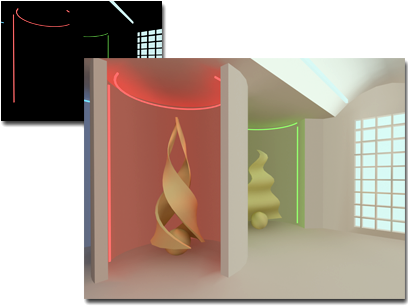
Upper left: By default, luminous neon lights do not influence the scene light.
Right: With Emit Energy on, the radiosity solution takes luminance into account.
Scales the effect of the base material’s Bump map in areas lit by indirect light. When this value is 0.0, the Bump map does not affect indirectly lit areas. This value does not affect the Bump amount in areas where the base material is lit directly. Range=–999.0 to 999.0. Default=100.0.
Scales the amount of energy the material reflects. Range=0.0 to 1000.0. Default=100.0.
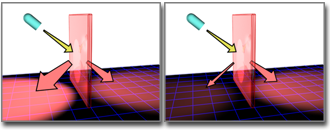
Reflectance Scale increases or decreases the energy of reflected rays.